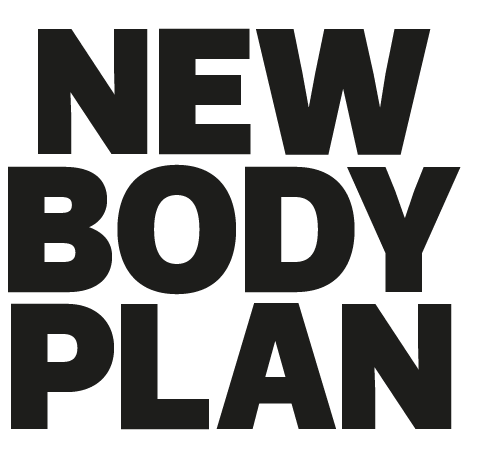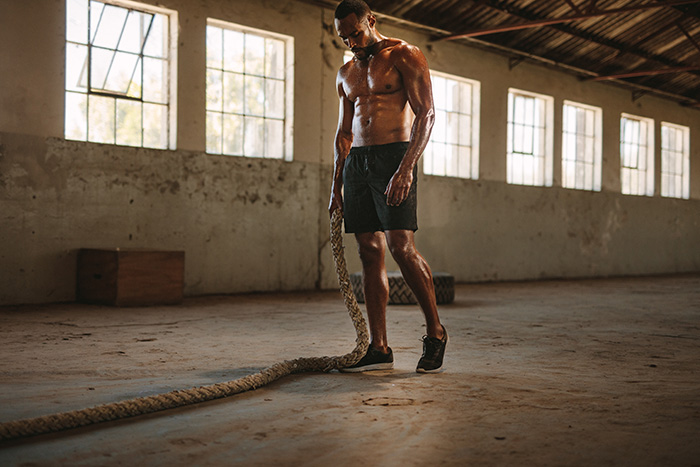How to train to burn fat and build muscle!
Build muscle size and strength and strip away body fat to achieve a lean, fit and strong physique by following these laws of lifting, says New Body Plan editor Joe Warner
First things first: if you want to get stronger, build more muscle, or strip away unwanted belly fat it all starts with a plan. Without one, all the motivation in the world will be wasted because you’ll stand zero chance of training cleverly and consistently, and they’re two of the most powerful factors behind positive and rapid body-composition changes. If you’ve not taken a look at the New Body Plan range of fat-loss and muscle-building workout plans, now’s the time! If you’re not sure which training programme is best for you, simply take our quick New Body Quiz to discover your perfect plan!
To find your perfect transformation plan, take the New Body quiz!
Take the New Body quiz!
So, here’s the New Body Plan “laws of lifting” that will build strength, increase muscle mass and burn body fat, so you can start making faster progress towards your best-ever body!
Which exercises should I do to burn fat and build muscle?
The lifts that make up your workouts shouldn’t really change whether you’re training for an increase in strength, and in increase in lean muscle mass (also called hypertrophy training), or fat loss. In all three scenarios your workouts should be based around the big compound lifts, such as the squat, bench press and overhead press, because these moves work multiple muscle groups at the same time.
This means they provide a greater training stimulus to force your body into positive adaptation, whether that’s stronger muscles, bigger muscles or a smaller belly. What does change, however, is how much weight you are lifting, which dictates how many sets and reps you do, and how long you rest between sets. Read more about the key training variables.
Which exercises should I do to increase strength?
To build stronger muscles you need to lift heavy: upwards of 80% of your one-rep max, which is the maximum amount of weight you can lift for a single rep of a given exercise. Lifting at the upper echelons of your percentage maximum means you can only do a few reps per set, and need longer rest periods between sets – between three to five minutes – to give your muscles and central nervous system enough time to recover. Find out how to select the right weight for each exercise here.
Which exercises should I do to build muscle size and definition?
When lifting to build more muscle mass you will need to do longer sets to expose your muscles to more time under tension, because this is what causes them to grow bigger. The weight you lift shoulder be around 60% to 80% of your one-rep max – but each set will contain more reps, typically around eight to 12, with relatively short rest periods of 2-3 minutes to work and fatigue as many muscle fibres as possible. Read more about the different rep ranges, and their training effect.
Which exercises should I do to burn more fat?
To reduce body fat you need to keep your rest periods between sets and different exercises as short as possible – ideally under one minute – to elevate your heart rate, get a sweat on, and work your muscles and cardiovascular system as hard as possible to burn calories both during the session, and to elevate your metabolism, which is the speed at which your body burns calories at rest, for the hours after your workout.
With such short rest periods you will have to reduce the weight on the bar so you can lift safely, especially towards the end of your session when you start to get tired. You should also consider doing some high-intensity interval-style cardio at the end of a workout.
How do I perform the big lifts to build muscle strength?
When training for strength it’s smart to do straight sets, because focusing on one lift at a time allows you to really focus on maximising your power output to move the heaviest possible weight. For muscle size gains it can make sense to perform straight sets, or pair two moves together in a superset, which is a set strategy where you do a set of the first exercise, called the A move, then a set of the second exercise, called the B move. There may or may not be a rest period between the A and B moves, but there is almost always rest after the B move.
You may have to lift lighter weights in supersets, especially for the B exercise, than when doing either the A or B move as a straight set, because there’s typically less recovery time between exercises and sets to fatigue your muscles faster. Supersets can work antagonistic or opposite muscle groups, such as chest and back, or the same muscle (an agonist superset, such as the bench press straight into press-ups) or even an upper- and lower-body superset, such as shoulder presses into lunges. Find out more about how your body builds lean muscle.
Should I do supersets for faster fat loss?
Supersets are great for fat loss because they elevate your heart rate far higher than straight sets alone, and trisets (three moves grouped together), and giant sets (four or more moves), are really effective because you do more reps in less time to increase your total session workload, and get your heart and lungs working harder to pump the muscles with blood and oxygen.
Another great option, especially if you are limited for time, space and equipment, is a dumbbell or barbell complex, in which you do a variety of lifts, such as squats, lunges, overhead press and bent-over rows, back to back in a circuit. It’ll work all your major muscle groups as well as your heart and lungs to burn maximum calories in a short period of time, and build lean muscle mass to boot. Find out how to make every rep more effective.
To find your perfect transformation plan, take the New Body quiz!
Take the New Body quiz!

